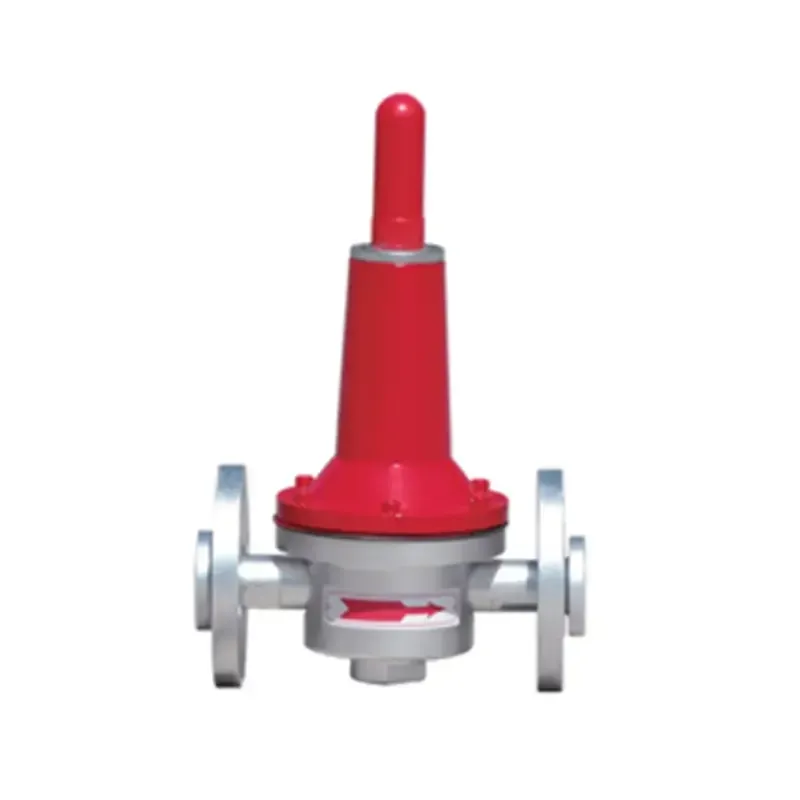
Nov . 25, 2024 15:43
Back to list
pressure reducing device
Understanding Pressure Reducing Devices A Key Component in Fluid Systems
In various industrial, commercial, and residential applications, maintaining appropriate fluid pressure is crucial for the efficient operation of systems. Overly high pressure can lead to equipment failure, inefficiencies, and even dangerous situations. Herein lies the importance of pressure reducing devices, commonly known as pressure regulators. These devices play a critical role in managing pressure levels, ensuring safety, and optimizing performance in fluid systems.
What is a Pressure Reducing Device?
A pressure reducing device is a mechanical apparatus designed to lower the pressure of a fluid flowing through it, which can be gas or liquid. These devices operate by automatically adjusting the size of the flow passage based on the pressure levels detected in the system. When the inlet pressure exceeds a preset level, the regulator reduces the pressure downstream, thus providing a stable outlet pressure suitable for industrial processes, home appliances, and more.
How Do Pressure Reducing Devices Work?
At the heart of many pressure reducing devices is a diaphragm or piston that responds to changes in pressure. When the fluid enters the regulator at a high pressure, the diaphragm moves, adjusting the flow passage to ensure that the pressure downstream remains consistent regardless of fluctuations in the inlet pressure.
1. Inlet Pressure Monitoring The device continuously monitors the incoming fluid pressure. 2. Adjustment Mechanism As the inlet pressure changes, the internal mechanism adjusts accordingly to modulate the flow. 3. Outlet Pressure Regulation The result is a stable outlet pressure that meets the specified requirements of the system or application.
Applications of Pressure Reducing Devices
Pressure reducing devices are utilized across various sectors, including
1. Industrial Manufacturing In manufacturing processes, maintaining optimal pressure levels can significantly impact production quality and efficiency. Pressure regulators help prevent machinery overload and reduce wear and tear on equipment.
pressure reducing device

3. Natural Gas Delivery In the gas industry, pressure regulators ensure that gas is delivered safely and at the correct pressure to homes and businesses, preventing overpressure situations that could lead to hazardous conditions.
4. Hydraulic Systems In hydraulic applications, maintaining a steady pressure is essential for operational stability and safety. Regulators help to manage hydraulic pressures, ensuring smooth functioning of hydraulic machinery.
5. Food and Beverage In the processing of food and beverages, consistent pressure control is vital for ensuring product quality and compliance with safety standards.
Benefits of Using Pressure Reducing Devices
The incorporation of pressure reducing devices in fluid systems offers numerous advantages
- Safety By preventing overpressure conditions, these devices reduce the risk of equipment failure and accidents. - Efficiency Regulating pressure can enhance system efficiency, leading to lower energy consumption and operating costs.
- Equipment Longevity By minimizing stress on equipment, pressure regulators can extend the lifespan of machinery, reducing maintenance costs and downtime.
- Quality Control In processes sensitive to pressure variations, such as food production, maintaining steady pressure is crucial for ensuring product quality.
Conclusion
Pressure reducing devices are integral components in managing fluid systems across various industries. By effectively regulating pressure, they enhance safety, improve efficiency, and ensure the longevity of equipment. As industries continue to evolve and innovations in fluid management emerge, the role of pressure reducing devices will remain pivotal in optimizing operations and protecting both equipment and personnel. As businesses look toward the future, investing in advanced pressure regulation solutions will be key to achieving a safer and more efficient environment.
Latest news
-
Safety Valve Spring-Loaded Design Overpressure ProtectionNewsJul.25,2025
-
Precision Voltage Regulator AC5 Accuracy Grade PerformanceNewsJul.25,2025
-
Natural Gas Pressure Regulating Skid Industrial Pipeline ApplicationsNewsJul.25,2025
-
Natural Gas Filter Stainless Steel Mesh Element DesignNewsJul.25,2025
-
Gas Pressure Regulator Valve Direct-Acting Spring-Loaded DesignNewsJul.25,2025
-
Decompression Equipment Multi-Stage Heat Exchange System DesignNewsJul.25,2025

